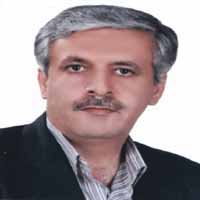The Effect of Eradican (EPTC) on Microbial Biomass C and N, and Urease and Arylsulphatase Activities in a Calcareous Soil under Field Conditions
Author(s):
Abstract:
The application of herbicides as organic chemical compounds to control pest and weeds may affect the population and activity of microorganisms, and this may have an influence on biochemical processes that are important for soil fertility and plant growth. The primary objective of this study was to evaluate different loading rates of eradican (EPTC) on soil microbial biomass C and N, microbial biomass C/N ratio and the activities of urease and arylsulphatase under field conditions. In this experiment, loading rates of 6 and 9 L ha-1 eradican were applied to a calcareous soil cultivated with corn (Zea mays L.) and left uncultivated using split-plots arranged in a completely randomized block design with three replications. The experiment was conducted in the Kabootarabad’s Agricultural Research Center, Isfahan. Soil microbial biomass C and N were determined at 30th and 90th days after the onset of experiment and the activities of urease and arylsulphatase were assayed at 30th, 60th and 90th days. Results showed that in soils cultivated with corn microbial biomass C increased with increasing eradican levels; and in both cultivated and uncultivated soils microbial biomass N and microbial biomass C/N ratios were increased over the control. At 30th day, urease activity at 6 L ha-1 level reduced, while at 9 L ha-1 level it increased compared with the control soils. At 60 day, there was no significant difference in the urease activity between the treatments. At 90th day, the activity of urease showed slight fluctuations. There was a reduction in arylsulphatase activity of the cultivated soils by increasing the loading rates of eradican during the experiment, and in uncultivated soils no trend was observed. Briefly, the use of eradican can cause either reduced or increased microbial biomass sizes and enzyme activities in calcareous soils These changes, however, depend largely upon the application rate of eradican, time elapsed since eradican application (i.e., sampling date) and the presence or absence of plant
Keywords:
Language:
Persian
Published:
Journal of Hydrology and Soil Science, Volume:16 Issue: 1, 2012
Page:
153
magiran.com/p1017915
دانلود و مطالعه متن این مقاله با یکی از روشهای زیر امکان پذیر است:
اشتراک شخصی
با عضویت و پرداخت آنلاین حق اشتراک یکساله به مبلغ 1,390,000ريال میتوانید 70 عنوان مطلب دانلود کنید!
اشتراک سازمانی
به کتابخانه دانشگاه یا محل کار خود پیشنهاد کنید تا اشتراک سازمانی این پایگاه را برای دسترسی نامحدود همه کاربران به متن مطالب تهیه نمایند!
توجه!
- حق عضویت دریافتی صرف حمایت از نشریات عضو و نگهداری، تکمیل و توسعه مگیران میشود.
- پرداخت حق اشتراک و دانلود مقالات اجازه بازنشر آن در سایر رسانههای چاپی و دیجیتال را به کاربر نمیدهد.
In order to view content subscription is required
Personal subscription
Subscribe magiran.com for 70 € euros via PayPal and download 70 articles during a year.
Organization subscription
Please contact us to subscribe your university or library for unlimited access!


